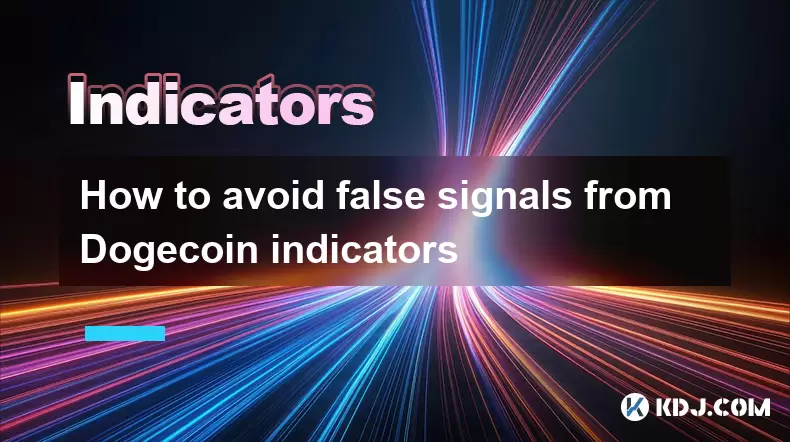-
 Bitcoin
Bitcoin $108,250.0992
0.11% -
 Ethereum
Ethereum $2,515.9404
0.03% -
 Tether USDt
Tether USDt $1.0003
0.00% -
 XRP
XRP $2.2166
-0.19% -
 BNB
BNB $656.5904
0.29% -
 Solana
Solana $147.4122
-0.58% -
 USDC
USDC $1.0000
-0.01% -
 TRON
TRON $0.2830
0.06% -
 Dogecoin
Dogecoin $0.1641
0.27% -
 Cardano
Cardano $0.5739
-0.19% -
 Hyperliquid
Hyperliquid $39.1463
-0.11% -
 Sui
Sui $2.8882
-0.02% -
 Bitcoin Cash
Bitcoin Cash $487.6428
0.31% -
 Chainlink
Chainlink $13.2097
0.07% -
 UNUS SED LEO
UNUS SED LEO $9.0308
0.10% -
 Avalanche
Avalanche $17.8608
0.13% -
 Stellar
Stellar $0.2379
-0.06% -
 Toncoin
Toncoin $2.7400
-0.39% -
 Shiba Inu
Shiba Inu $0.0...01144
-0.36% -
 Litecoin
Litecoin $87.5467
0.66% -
 Hedera
Hedera $0.1538
0.22% -
 Monero
Monero $315.5479
0.36% -
 Dai
Dai $1.0000
0.00% -
 Polkadot
Polkadot $3.3523
-0.71% -
 Ethena USDe
Ethena USDe $1.0003
0.01% -
 Bitget Token
Bitget Token $4.3960
-1.03% -
 Uniswap
Uniswap $7.2663
4.19% -
 Aave
Aave $272.8619
2.04% -
 Pepe
Pepe $0.0...09676
-0.18% -
 Pi
Pi $0.4586
-2.87%
How to create a custom indicator for Bitcoin in Pine Script?
A custom Pine Script indicator for Bitcoin lets traders create tailored tools using inputs, EMAs, alerts, and visual cues to analyze price trends and generate signals.
Jul 06, 2025 at 03:36 am

What is a Custom Indicator in Pine Script?
A custom indicator in Pine Script allows traders to define their own technical analysis tools based on specific logic or formulas. In the context of Bitcoin trading, creating a custom indicator enables users to tailor visualizations and signals according to unique strategies. Pine Script, the scripting language used by TradingView, provides a flexible environment for developing these indicators.
To begin working with Pine Script, you need access to the TradingView platform. Once logged in, navigate to the Pine Editor, which serves as the development interface for writing scripts. Understanding the basic structure of Pine Script is essential before diving into more complex implementations.
Setting Up the Pine Script Environment
Before writing any code, ensure that your TradingView account is properly configured for Pine Script development. Open the Pine Editor from the bottom panel of any chart window. The editor includes a built-in debugger and compiler that helps identify syntax errors and optimize performance.
The script begins with the version declaration:
//@version=5
indicator("My Bitcoin Custom Indicator", overlay=true)This line specifies that the script uses Pine Script version 5, the latest version at the time of writing. The indicator function defines the name of the script and whether it will appear on the price chart (overlay=true) or in a separate pane.
Defining Input Parameters for Flexibility
Custom indicators often require adjustable parameters to allow users to modify settings without changing the core logic. Use the input() function to create customizable variables.
For example, if you're building a moving average crossover strategy for Bitcoin, you might include inputs like this:
shortLength = input.int(9, title="Short MA Length")
longLength = input.int(21, title="Long MA Length")These lines allow users to set the lengths of short-term and long-term moving averages directly from the indicator's settings panel on TradingView.
Implementing Logic for Bitcoin-Specific Analysis
Once inputs are defined, implement the calculation logic tailored to Bitcoin price data. For instance, calculating two exponential moving averages (EMA) and plotting them can help visualize trend direction.
Here’s how you can compute and plot EMAs:
emaShort = ta.ema(close, shortLength)
emaLong = ta.ema(close, longLength)plot(emaShort, color=color.blue, title="Short EMA")
plot(emaLong, color=color.red, title="Long EMA")
In this example, ta.ema() computes the exponential moving average using the closing prices. The plot() function visually represents both EMAs on the chart, enabling real-time monitoring of Bitcoin’s price trends.
Adding Conditional Alerts and Visual Cues
Enhance your custom indicator by adding alerts and conditional formatting to highlight significant events such as crossovers or divergences.
To generate alerts when the short EMA crosses above the long EMA:
crossoverSignal = ta.crossover(emaShort, emaLong)
plotshape(crossoverSignal, location=location.belowbar, color=color.green, style=shape.triangleup, size=size.small)
alertcondition(crossoverSignal, title="EMA Crossover Alert", message="Bitcoin EMA crossover detected!")This snippet introduces plotshape() to display visual markers when a crossover occurs and alertcondition() to trigger notifications via email or SMS through TradingView’s alert system.
Frequently Asked Questions
Can I backtest my custom Bitcoin indicator in Pine Script?
Yes, Pine Script supports strategy testing using the strategy() function instead of indicator(). You can define entry and exit conditions, simulate trades, and evaluate performance metrics directly within TradingView. However, for full backtesting capabilities, consider converting your indicator into a strategy and applying historical data.
How do I share my custom Pine Script indicator with others?
After saving your script in the Pine Editor, click the Publish button to make it publicly available on TradingView. You can also generate a shareable link or embed the indicator on external platforms. Ensure that the script does not contain sensitive or proprietary logic before publishing.
Is it possible to combine multiple indicators into one Pine Script?
Absolutely. You can integrate various technical indicators—like RSI, MACD, or Bollinger Bands—into a single script. Each indicator should be clearly defined and plotted separately to avoid confusion. Proper commenting and modular code organization improve readability and maintainability.
Why doesn’t my Pine Script update in real-time for Bitcoin?
Ensure that your script does not contain unnecessary delays or loops that may hinder execution speed. Pine Script updates automatically as new candlestick data becomes available. If real-time behavior seems delayed, check for inefficient calculations or excessive use of request.security() for multi-symbol data retrieval.
Disclaimer:info@kdj.com
The information provided is not trading advice. kdj.com does not assume any responsibility for any investments made based on the information provided in this article. Cryptocurrencies are highly volatile and it is highly recommended that you invest with caution after thorough research!
If you believe that the content used on this website infringes your copyright, please contact us immediately (info@kdj.com) and we will delete it promptly.
- BNB, Nano Labs, and Binance: A $160 Million Crypto Play
- 2025-07-06 12:30:13
- Bitcoin, Taxing, and Fund Managers: Navigating the Crypto Maze in NYC
- 2025-07-06 12:50:14
- Debt Ceiling, Trump, and Bitcoin's Allure: A New York Minute on Fiscal Policy
- 2025-07-06 12:30:13
- Bitcoin, Ethereum, and Crypto Gains: What's Hot in the NYC Crypto Scene?
- 2025-07-06 13:10:15
- Zerion: Real-Time Portfolio Tracking Revolutionized
- 2025-07-06 13:10:15
- Bitcoin Transfer, Market Dip, and Speculation: Decoding the Crypto Whale's Moves
- 2025-07-06 12:35:13
Related knowledge

How to spot manipulation on the Dogecoin chart
Jul 06,2025 at 12:35pm
Understanding the Basics of Chart ManipulationChart manipulation in the cryptocurrency space, particularly with Dogecoin, refers to artificial price movements caused by coordinated trading activities rather than genuine market demand. These manipulations are often executed by large holders (commonly known as whales) or organized groups aiming to mislead...

What is the significance of a Dogecoin engulfing candle pattern
Jul 06,2025 at 06:36am
Understanding the Engulfing Candle Pattern in CryptocurrencyThe engulfing candle pattern is a significant technical analysis tool used by traders to identify potential trend reversals in financial markets, including cryptocurrencies like Dogecoin. This pattern typically consists of two candles: the first one is relatively small and indicates the current...

Dogecoin monthly chart analysis for long term investors
Jul 06,2025 at 10:08am
Understanding the Dogecoin Monthly ChartFor long-term investors, analyzing the monthly chart of Dogecoin (DOGE) provides a macro view of its price behavior over extended periods. The monthly chart captures major trends, key resistance and support levels, and potential reversal zones that are crucial for strategic investment planning. Unlike daily or hou...

How to manage risk using ATR on Dogecoin
Jul 06,2025 at 02:35am
Understanding ATR in Cryptocurrency TradingThe Average True Range (ATR) is a technical indicator used to measure market volatility. Originally developed for commodities, it has found widespread use in cryptocurrency trading due to the high volatility inherent in digital assets like Dogecoin (DOGE). The ATR calculates the average range of price movement ...

How to avoid false signals from Dogecoin indicators
Jul 06,2025 at 06:49am
Understanding Dogecoin Indicators and Their LimitationsDogecoin indicators are tools used by traders to analyze price movements and make informed decisions. These include moving averages, Relative Strength Index (RSI), MACD, and volume-based metrics. However, these tools can sometimes generate false signals, especially in highly volatile markets like Do...

Dogecoin Donchian Channels strategy
Jul 06,2025 at 02:43am
What Are Donchian Channels?Donchian Channels are a technical analysis tool used to identify potential breakouts, trends, and volatility in financial markets. They consist of three lines: the upper band, which marks the highest high over a specific period; the lower band, which reflects the lowest low over the same period; and the middle line, typically ...

How to spot manipulation on the Dogecoin chart
Jul 06,2025 at 12:35pm
Understanding the Basics of Chart ManipulationChart manipulation in the cryptocurrency space, particularly with Dogecoin, refers to artificial price movements caused by coordinated trading activities rather than genuine market demand. These manipulations are often executed by large holders (commonly known as whales) or organized groups aiming to mislead...

What is the significance of a Dogecoin engulfing candle pattern
Jul 06,2025 at 06:36am
Understanding the Engulfing Candle Pattern in CryptocurrencyThe engulfing candle pattern is a significant technical analysis tool used by traders to identify potential trend reversals in financial markets, including cryptocurrencies like Dogecoin. This pattern typically consists of two candles: the first one is relatively small and indicates the current...

Dogecoin monthly chart analysis for long term investors
Jul 06,2025 at 10:08am
Understanding the Dogecoin Monthly ChartFor long-term investors, analyzing the monthly chart of Dogecoin (DOGE) provides a macro view of its price behavior over extended periods. The monthly chart captures major trends, key resistance and support levels, and potential reversal zones that are crucial for strategic investment planning. Unlike daily or hou...

How to manage risk using ATR on Dogecoin
Jul 06,2025 at 02:35am
Understanding ATR in Cryptocurrency TradingThe Average True Range (ATR) is a technical indicator used to measure market volatility. Originally developed for commodities, it has found widespread use in cryptocurrency trading due to the high volatility inherent in digital assets like Dogecoin (DOGE). The ATR calculates the average range of price movement ...

How to avoid false signals from Dogecoin indicators
Jul 06,2025 at 06:49am
Understanding Dogecoin Indicators and Their LimitationsDogecoin indicators are tools used by traders to analyze price movements and make informed decisions. These include moving averages, Relative Strength Index (RSI), MACD, and volume-based metrics. However, these tools can sometimes generate false signals, especially in highly volatile markets like Do...

Dogecoin Donchian Channels strategy
Jul 06,2025 at 02:43am
What Are Donchian Channels?Donchian Channels are a technical analysis tool used to identify potential breakouts, trends, and volatility in financial markets. They consist of three lines: the upper band, which marks the highest high over a specific period; the lower band, which reflects the lowest low over the same period; and the middle line, typically ...
See all articles

























































































